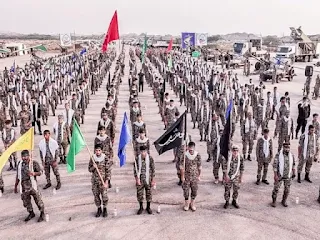Iran has not yet responded publicly to the reported deaths in Yazd.
Iran’s judiciary said Israeli strikes have hit Tehran’s Evin prison, leaving sections of the facility damaged, AFP reports.
“In the latest attack by the Zionist regime on Tehran, projectiles unfortunately struck Evin prison, causing damage to parts of the facility,” said the judiciary’s Mizan Online website.
It added that all resources had been deployed to manage the complex and the situation remained “under control”.
The Council of Foreign Ministers of the Organisation of Islamic Cooperation (OIC) countries have condemned Israel’s aggression against Iran and called for an immediate end to attacks, APP reports.
The foreign ministers from across the OIC member states adopted the Istanbul Declaration to condemn the destabilisation policies of Israel in the region and its recent attacks on Iran, Syria, and Lebanon as constituting a flagrant violation of the sovereignty and security of these countries and international law.
The body called for making Israel accountable for crimes and decided to establish an open-ended ministerial contact group to establish regular contacts with the relevant regional and international parties to support descalation efforts, stop the aggression against Iran and to achieve a peaceful settlement.
The council of foreign ministers stressed the urgent need to stop Israeli attacks against Iran and their great concern regarding this dangerous escalation, threatening the human, economic and environmental situation in the region.
The IRGC, a powerful branch of Iran’s military reporting directly to Supreme Leader Ayatollah Ali Khamenei, plays a central role in the country’s foreign operations and oversees its ballistic missile and nuclear programmes. It comprises around 190,000 active personnel and was designated a terrorist organisation by the United States in 2019.
An unspecified number of other IRGC personnel were also wounded in the strikes, which mark one of the deadliest Israeli attacks on Iranian territory since tensions escalated earlier this month, reported semi-official Tasnim News Agency.
Israel has not officially confirmed the strike in Yazd but claims it has assassinated around two dozen Iranian military commanders and nuclear scientists since June 13.
Israeli air strikes have killed several top Iranian military officials and nuclear scientists, including the commander of the IRGC Hossein Salami, in one of the most direct and deadly escalations between the two countries to date.
IRGC has begun using the Kheibar Shekan missile—also known as the Khorramshahr-4—which was unveiled in 2022 and is believed to carry the heaviest payload among Iran’s ballistic missiles. IRGC said its latest missile strikes targeted Ben Gurion International Airport and several research sites in Israel.
Meanwhile, Iranian state media has confirmed the deaths of at least four senior military officials in Israeli strikes, including Salami, Armed Forces chief of staff Mohammad Bagheri, IRGC aerospace commander Amir Ali Hajizadeh, and General Gholamali Rashid.
The attacks also killed six prominent nuclear scientists and wounded hundreds, as Israel targeted key infrastructure sites across Iran, including the uranium enrichment facility in Natanz.
After the assasinations, Khamenei appointed Ahmad Vahidi as the new IRGC chief and Majid Mousavi as head of its aerospace division.
The initial wave of Israeli strikes, involving approximately 200 fighter jets, hit multiple Iranian cities, including Tehran, Isfahan, Arak, Tabriz, and Kermanshah. In Kermanshah, near the Iraqi border, an underground ballistic missile storage facility was reportedly destroyed.
Iranian authorities initially reported at least 80 people killed and over 320 wounded in the first round of attacks. However, updated figures from Human Rights Activists (HRA), a Washington-based monitoring group, indicate that Israeli strikes have killed at least 950 people and injured more than 3,450 across Iran to date.
HRA reported that among the dead are 380 civilians and 253 members of Iran’s security forces. The group, known for documenting the 2022 Mahsa Amini protests, cross-checks local reports with an independent network inside the country.
Iran’s government has not issued consistent nationwide casualty updates during the conflict. Its most recent count, released by the Health Ministry, reported 400 deaths and over 3,000 injuries—figures significantly lower than HRA’s estimates.
Among the injured is senior Iranian diplomat Ali Shamkhani, who has been leading negotiations with the United States. He is reported to be in critical condition following the strikes.

